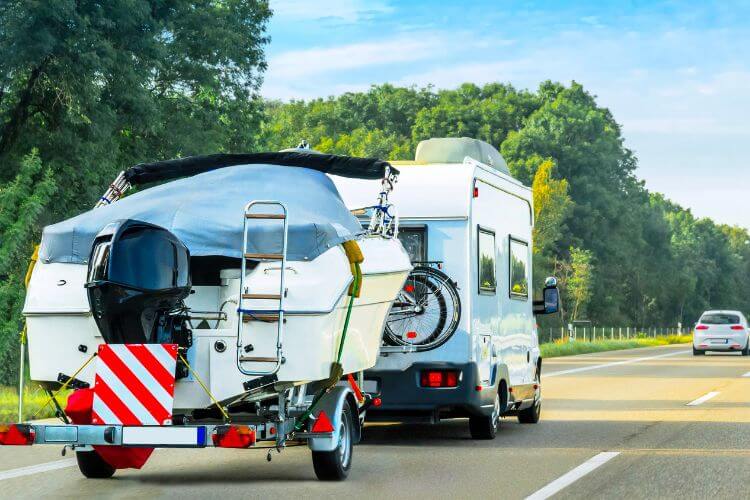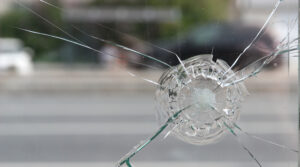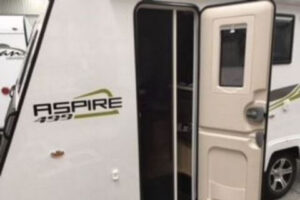Introduction to Caravan Handles
Caravans, especially for those new to the lifestyle, come with various features that might initially seem puzzling. One such feature is the small handles located on the back of the caravan. At first glance, these might appear as mere aesthetic additions or minor components. However, their significance becomes evident once their purpose is understood. These handles are not just for show; they play a crucial role in the functionality and utility of the caravan.
The significance of the small handles on the back of the caravan:
The handles on the back of a caravan, while small, hold considerable importance. For many, understanding the purpose of these handles can be a revelation. They are not just ornamental but serve practical functions that enhance the caravan experience. Their presence indicates thoughtful design, ensuring that every aspect of the caravan is purposeful and user-friendly.
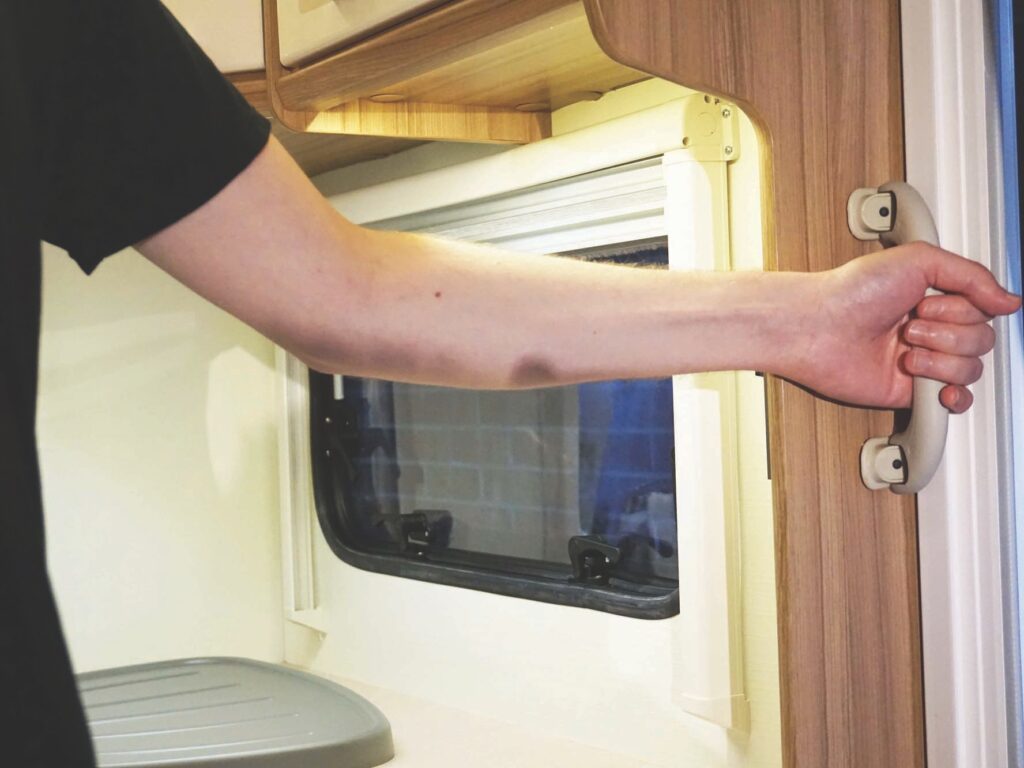
Functionality of the Handles
While aesthetics play a role in any vehicle’s design, including caravans, the primary focus remains on functionality. This is especially true for features like the handles. They are designed to be practical and purposeful in every sense. These handles are not mere decorative elements but are integral to the caravan’s operation and the comfort of its users.
The primary purpose of the handles for maneuvering the caravan:
The handles on a caravan’s back are primarily intended to help maneuver the caravan, especially when it’s not attached to a towing vehicle. This function is essential, especially in tight spaces or when precise positioning is required. By providing a grip point, these handles allow users to have more control over the caravan’s movement, ensuring safety and ease of use.

Importance of Having Handles on Caravans
In the modern era, almost all caravans come equipped with grab handles on the back. This standard feature is a testament to their importance. Whether you’re buying a brand-new caravan or considering a second-hand one, the presence or absence of these handles can significantly influence the decision. Their utility goes beyond mere convenience, often proving indispensable in various situations.
The misconception of using the handles to pull a loaded caravan:
A common misconception among many is that these handles can be used to pull a fully loaded caravan. This belief can lead to mishaps, as pulling a heavy caravan using these handles is not their primary purpose. Instead, they are designed for pushing and maneuvering the caravan. Understanding this distinction is crucial to prevent potential damage to the handles and ensure safe and effective use.
Additional Uses of the Handles
Beyond the primary function of maneuvering the caravan, these handles serve several other purposes. For instance, when dropping off a caravan for service, mechanics can use these handles to move and position it. Additionally, in the manufacturing and assembly process, these handles prove invaluable, allowing workers to efficiently move caravans along production lines.
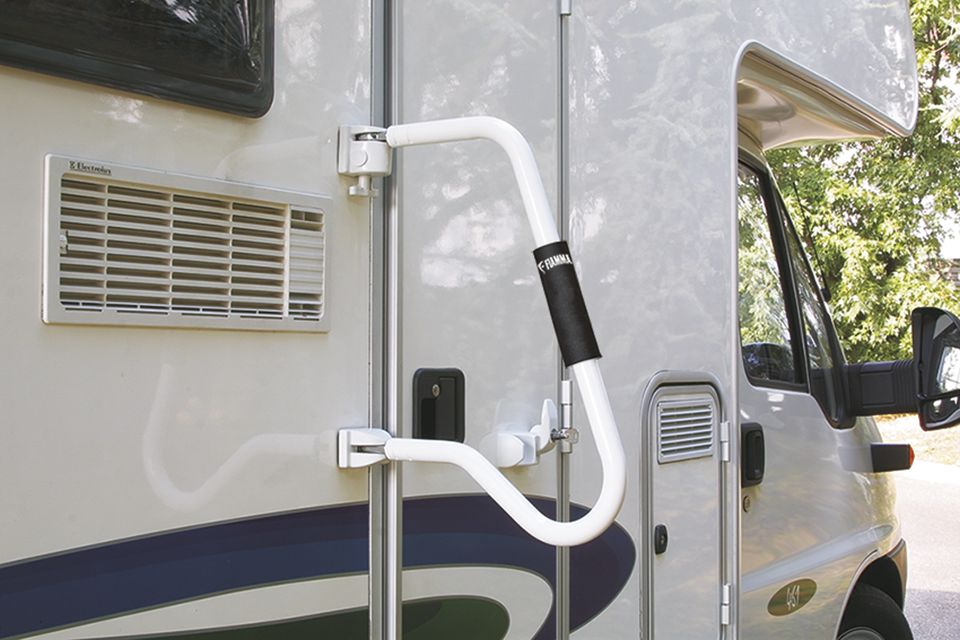
Utility for mechanics during servicing:
When a caravan is brought in for service or maintenance, it often needs to be moved or repositioned. The handles on the back provide an easy grip point for mechanics to safely and efficiently move the caravan, especially when it’s elevated or in tight spaces. Their presence ensures that the servicing process is smooth and hassle-free, both for the mechanics and the caravan owner.
Specific Functions of the Handles
The handles on the back of a caravan are multifunctional. Their primary role is to assist in maneuvering the caravan, especially through push actions. This is particularly useful in fields, workshops, service areas, or assembly lines. Additionally, their design, which offers an easy grip on the otherwise flat surface of the caravan’s rear, makes them versatile for various other uses.
Using the handles to tie or hang items:
Another notable function of these handles is their utility in tying or hanging items. For instance, they can be used to set up a makeshift washing line during camping trips. By simply tying a string or rope to one of these handles and securing the other end to a stationary object, users can create a convenient hanging space. This versatility further underscores the handles’ importance and the thoughtful design behind them.
Historical Evolution of Caravan Handles
The history of caravans is rich and diverse, with each era bringing forth innovations and improvements. The inclusion of handles on the back of caravans is one such evolution that has its roots in practicality and user convenience. As caravans transitioned from basic shelters to sophisticated mobile homes, the need for better maneuverability and functionality became evident. This led to the introduction and eventual standardization of handles, enhancing the caravan experience for users.
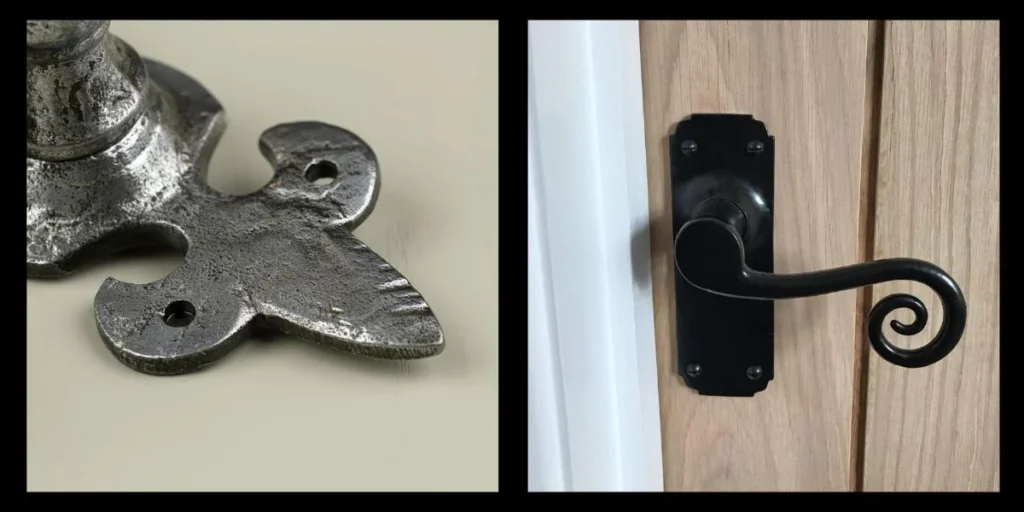
How have caravan handles evolved over time?
Initially, caravans were simple structures, primarily used by nomads and travelers for shelter. As their popularity grew and they became more sophisticated, the need for features that enhanced user experience became evident. The introduction of handles was a response to this need, providing users with a tool to better control and maneuver their caravans. Over time, these handles have seen improvements in design, material, and placement, reflecting the industry’s commitment to user convenience and safety.
Safety Considerations
Safety is paramount when it comes to vehicles, and caravans are no exception. The inclusion of handles on the back of caravans is not just for convenience but also plays a role in ensuring safety. Properly designed and positioned handles can prevent accidents during maneuvering, provide secure points for tying items, and even assist in emergency situations.
How do these handles contribute to the safety of caravan users?
The handles on the back of caravans serve multiple safety purposes. Firstly, they offer a secure grip when moving the caravan, reducing the risk of slips or mishandling. Secondly, they provide a reliable point for tying down items, ensuring they don’t come loose during transit. Lastly, in emergency situations, these handles can be used to quickly move the caravan or secure it. Their presence, thus, adds an extra layer of safety for caravan users.
Material and Design of Handles
The effectiveness of caravan handles is largely determined by their material and design. Typically made of durable materials like metal or high-strength plastic, these handles are designed to withstand the weight and force exerted during maneuvering. Their design often focuses on ergonomics, ensuring a comfortable grip, and durability, ensuring they last the caravan’s lifespan without needing frequent replacements.
What materials are commonly used for these handles?
Caravan handles are typically made from materials that prioritize strength and durability. Common materials include metals such as stainless steel or aluminum, known for their resistance to rust and corrosion. Some modern caravans might also use high-strength plastics or composites, which offer a balance between durability and weight. The choice of material ensures that the handles can withstand regular use and environmental factors, ensuring longevity and reliability.
Comparison with Other Vehicles
While caravans are unique in many ways, they share some similarities with other vehicles like RVs or trailers. One such common feature is the presence of handles or grip points. However, the design, placement, and purpose of these handles can vary based on the vehicle’s primary function and user requirements.
Do other vehicles, like RVs or trailers, have similar handles?
RVs and trailers, like caravans, often come equipped with handles or grip points. However, their design and placement might differ. For instance, RVs, being larger and often motorized, might have handles primarily for entry and exit purposes, while trailers might have them for maneuvering, similar to caravans. The underlying principle remains the same: to provide users with control, convenience, and safety. However, the specific design and functionality might vary based on the vehicle’s unique requirements.
Maintenance and Care
Like any other component of a caravan, the handles require regular maintenance and care to ensure their longevity and functionality. This involves periodic checks for any signs of wear or damage, cleaning to remove dirt or corrosion, and tightening or replacing any loose or worn-out parts. Proper maintenance ensures that the handles remain reliable and safe to use throughout the caravan’s lifespan.
How should caravan owners maintain these handles to ensure longevity and safety?
Regular maintenance of caravan handles involves a few simple steps. Firstly, cleaning them periodically to remove dirt, grime, or any corrosive substances is essential. This can be done using a mild detergent and water, followed by drying to prevent rust or corrosion. Secondly, checking for any signs of wear, cracks, or damage and addressing them promptly ensures safety. Lastly, tightening any loose screws or bolts and lubricating moving parts can prevent unexpected failures and extend the handles’ lifespan.
Conclusion:
Caravans, as symbols of adventure and freedom, are intricately designed to offer both comfort and functionality. Among the myriad features that enhance the caravan experience, the handles on the back stand out as a testament to thoughtful design and user-centric innovation. These handles, while seemingly simple, play a pivotal role in ensuring maneuverability, safety, and versatility. From their historical evolution to their modern-day significance, these handles encapsulate the caravan industry’s commitment to user convenience and safety.
As we’ve explored, the handles are not mere appendages but are integral to the caravan’s operation. Their multifaceted uses, ranging from maneuvering to serving as tie-down points, highlight their indispensability. Moreover, the choice of materials and design considerations further emphasize the industry’s focus on durability and user comfort. When compared to other vehicles, the unique placement and purpose of these handles in caravans become even more evident, showcasing their specialized role.
Maintenance and care of these handles, like any other component, are crucial to ensure their longevity and optimal performance. Regular checks, cleaning, and timely repairs can make a world of difference in their lifespan and functionality.
In conclusion, the handles on the back of caravans are more than just functional components; they are emblematic of the caravan lifestyle – a blend of adventure, practicality, and attention to detail. As caravan enthusiasts or potential owners, understanding and appreciating these nuances can greatly enhance the overall experience, making every journey memorable and safe.
